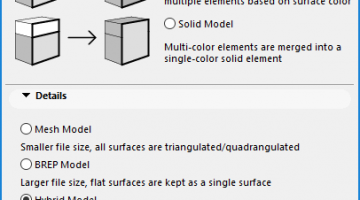

If your object table memory size is very large and you really believe it shouldn't be, then you will have to go on a search for the object or objects that are causing the file size. See the Rhino Help for more on using blocks. If you haven't already created the file, and you will be having lots of identical objects in it, using blocks may help keep file size down. If you need to send the file to someone, zipping it often helps reduce Rhino file size significantly. Massive amounts of geometry in the file: As said earlier, assuming the file has already been created, there is not all that much you can do about reducing the file size in this case - Rhino needs that space to correctly describe all the objects. Using the above procedure to remove plug-in data can also solve some of the problems with data from some “unknown source” that is “stuck” in the file that you haven't been able to remove any other way. Warning: this will nuke all data from all plug-ins (currently) so make sure you are really not going to need this stuff again! Good idea to make a copy just in case. The way to do that is to use _-SaveAs (with the dash!) on the command line you will see an entry _SavePlugInData. However, perhaps you got a file back from your render person with all their custom materials in it, or from your modelmaker with all their CAM toolpaths in it you don't want any of that stuff anymore anyway and would like to reduce the file size if possible. Plug-in data: Data created by Rhino plug-ins stays in the file even if the Rhino instance opening the file doesn't have the appropriate plug-in(s) installed - you can't access it, but it's still there and doesn't get purged when re-saving the file.


 0 kommentar(er)
0 kommentar(er)
